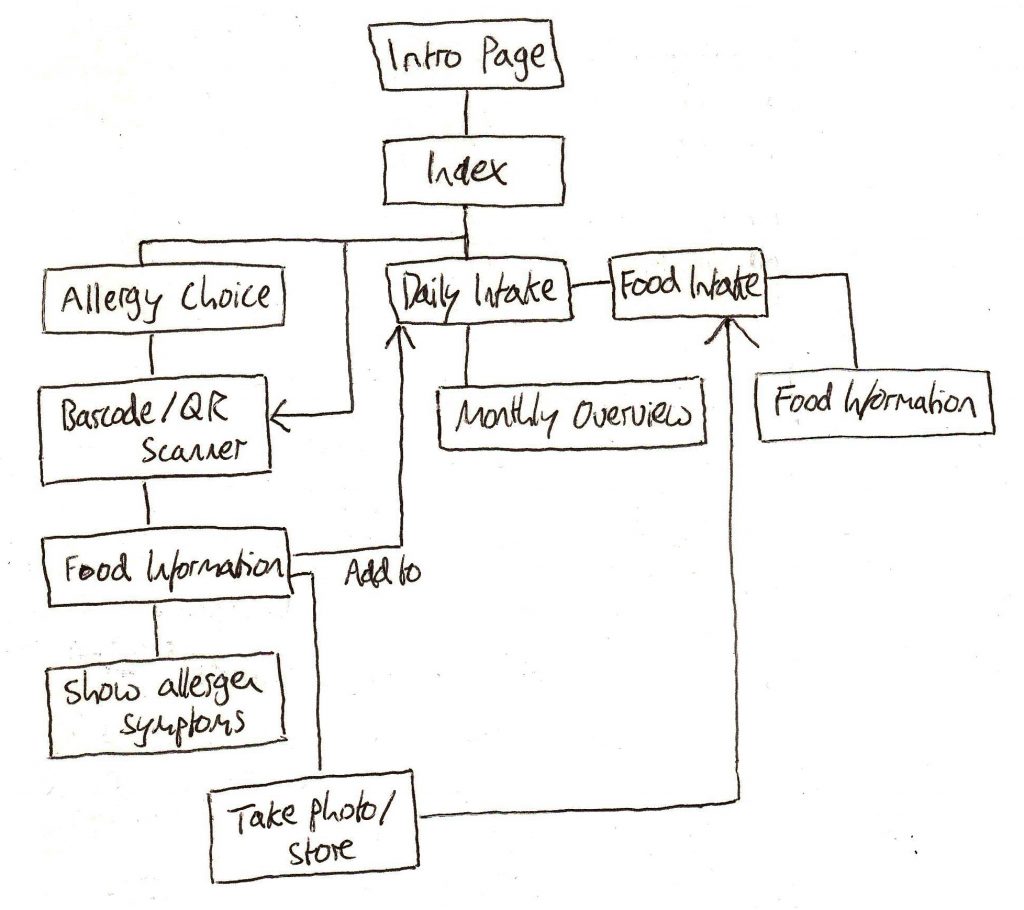Every Idea Needs User Interface Translation
Sketching takes your imaginative mind from the clouds to the user interface screen where you can start thinking about the user experience. You’ll be able to figure out how your app will work to get the desired result. Sketching allows you to visualize the screen-to-screen interaction so that your idea is something that’s visible and clear in user interface form.

A Sketch is Not a Wireframe
Many designers mistakenly think a sketch is a wireframe. They are similar but they are not the same thing. Both are useful for illustrating an interface concept, but a wireframe and a sketch are done in different mediums and produce different results.
When you sketch, you are trying to get a basic concept of how the app will work in user interface form. There are many ways you could craft an interface concept. But here you are trying to figure out what those ways are and which way works best. There is a lot of quick and dirty thinking that happens from pen to paper. The specifics of the user interface aren’t important here. What matters most is understanding what the user will basically see on each screen that will lead them to the desired result.
Sketching Always Comes Before Wireframing
One of the biggest advantages to sketching is that it allows you to express your ideas quickly and involve others in creating the user experience. Whether you’re sketching on a whiteboard or paper, it’s important that your clients or team members understand the basic concept of the user experience so that they can provide you with the necessary content. It’s also important to include any feedback or ideas they have in your sketches so that they can see how it’ll look. You could even ask clients to sketch their ideas out. This puts everyone on the same page so that the team can move forward with togetherness and mutual understanding.
Sketching Makes You Think and Work Faster
Wireframing from scratch with no basic concept is hard because you can’t push pixels on software as fast as you can draw them on paper. When you’re concepting the interface, you’ll think about all the ways you can craft the user experience. There are a lot of ideas that could pop into your head that you won’t be able to illustrate them on a pixel canvas as fast because of the lack of flexibility. Sketching lets you explore different options quickly so that you can figure out the best design direction. Getting a basic concept of the user interface through sketching will make the wireframing process faster and easier.
Sketching Makes Your Wireframes More Detailed
Wireframing with a sketched out concept means you don’t have to figure out as much on your wireframes. When you’ve done the sketching already, you don’t have to brainstorm all the various design directions you could go. This leads to a more detailed wireframe because you’re spending more time refining the sketched out concept you already have. The more detailed and refined your wireframes are, the easier it’ll be when you get to the visual mockups stage.
Sketches Can Look Bad and Still Work Wonderfully
A sketch can look bad and still work wonderfully. What matters isn’t your artistic ability, but your ability to explain different interface concepts. Sketches offer others a peek into your thinking. When you get new ideas, it’s easy to show them on your sketches. Unlike mockups, sketches don’t need to look pretty. You don’t need to have any technical design skill to do them.
Sketching sets the tone for the rest of the design process. It’s key in crafting the user experience and communicating it to others. You may think you don’t need to sketch because you already know how you want the interface to look. But when you actually do sketch, you’ll realize that the path that you were so set on might not work the best. Sketching allows you to entertain all the possibilities of what your interface could become. Where you go from there is completely up to you.